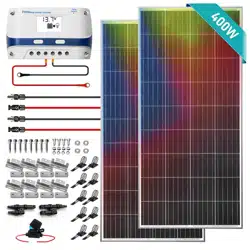Loading ...
Loading ...
Loading ...

www.SereneLifeHome.com
4
• Environmental Conditions.
The module is intended for use in temperate climatic conditions. The module is
“non-explosion-protected equipment”. Hence it must not be installed in the
proximity of highly inammable gases and vapors (e.g. lling stations, gas
containers, paint equipment). The module must not be installed near to naked
ames or ammable materials. Do not expose modules to concentrated light
sources. It must not be immersed in water or constantly exposed to water
(e.g. from fountains). If there is exposure to salt (it is recommended that modules
are installed at least 500m from the sea) and sulfur (sulfur sources, volcanoes),
there is a risk of corrosion.
• Maximum number of modules in parallel and in series
When designing the system, we recommend that the maximum number of
modules in parallel should be no more than four while the maximum number of
modules in series no more than twelve.
Recommended maximum series/parallel module congurations:
[Vsys/(1.25Voc)]/2
Please note:
1. Our panel leading cable is 2.5mm2, and the maximum current it bears is 16A.
2. Please choose suitable accessories according to the system demand and
components' capacity guided by qualied electrician electrician.
• Requirements of Installation
Make sure the modules’ electrical performances in a system are the same.
When connected in series, modules must all have the same amperage.
When connected in parallel, the modules must all have the same voltage.
Connect the quantity of modules that match the voltage specications of the
devices used in the system. The modules must not be connected together to
create a voltage higher than the permitted system voltage. To minimize risk in
the event of an indirect lightning strike avoid forming loops when designing the
system. Articially concentrated sunlight shall not be directed on the module or
panel.
Modules must not be tted as overhead glazing. Ensure that the mounting
system can also withstand the anticipated wind and snow loads.
Precipitation can run o through small openings on the back side of the module.
Make sure that these openings are not masked after mounting.
Loading ...
Loading ...
Loading ...
